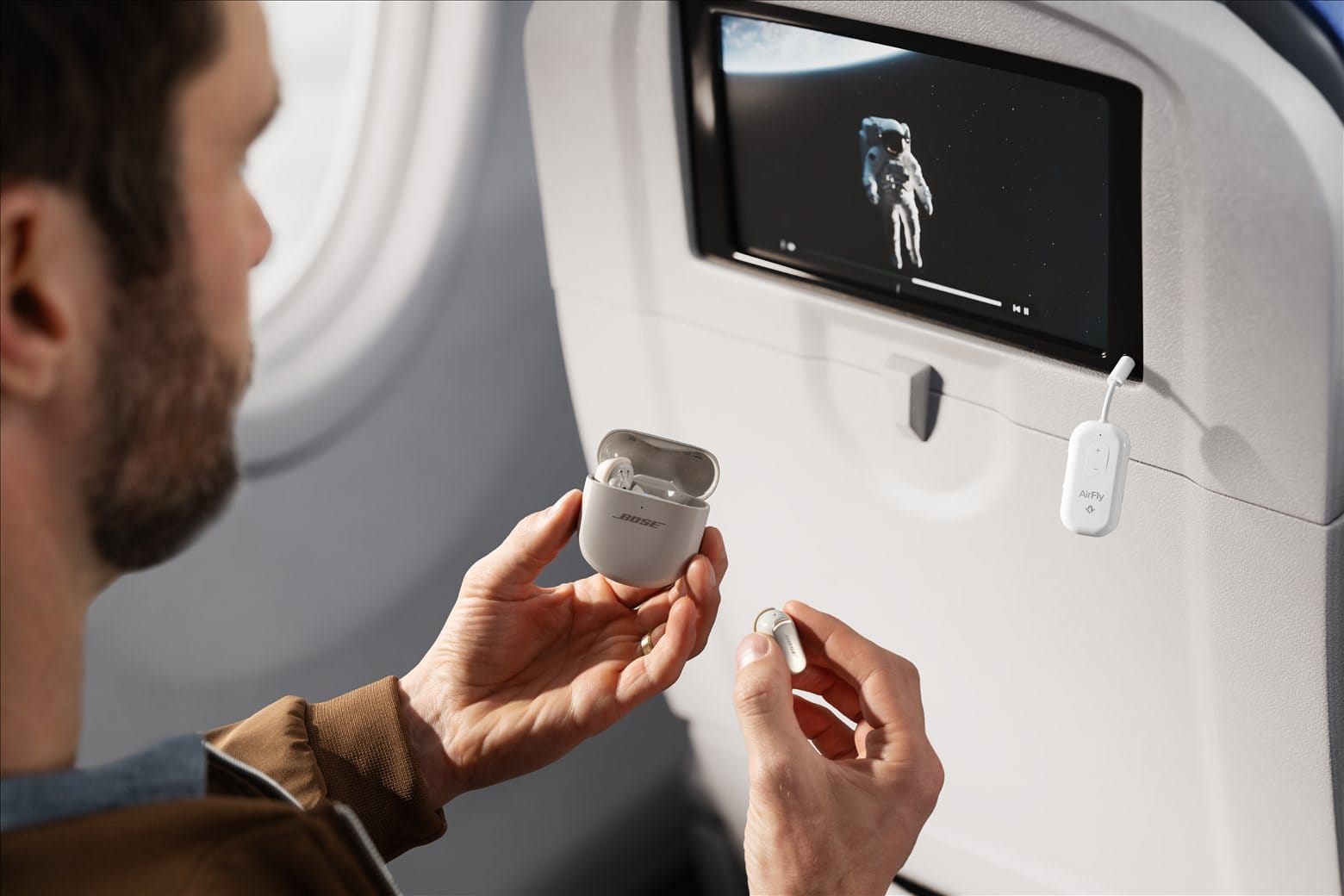Maono PD400X Microphone Review – The Maono PD400X is a dual-mode USB/XLR microphone designed for content creation like podcasts, streaming, and general audio recording. Priced at 154.99 USD (around 240 AUD), it outperforms its price point in terms of build, sound reproduction, and EQ features.
I want to clarify that this review is tailored for those new to audio recording or looking for a straightforward opinion on this microphone. I won’t delve into my opinions on the highly technical specifications, but I aim to provide simple definitions of the microphone’s key aspects, making it easy for you to grasp the essential details.
Packaging and Set-up
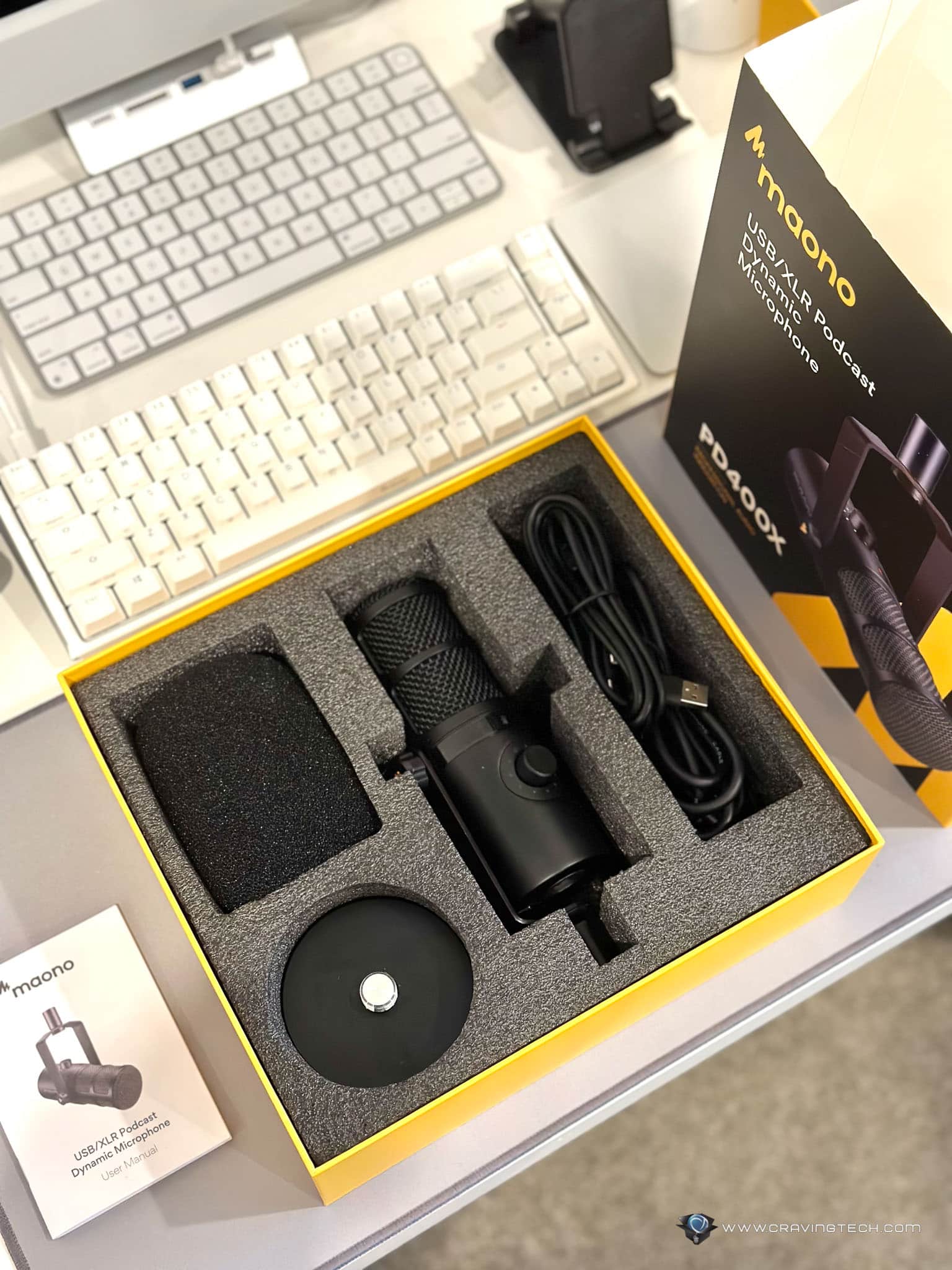
The packaging contents include:
- XLR dynamic microphone
- Desktop stand base
- Wind foam
- User manual
- XLR-XLR audio cable
- USB-C cable with interchangeable USB-C/USB-A end.
Set up is extremely straightforward, just plug in via USB-C or USB-A to your phone or laptop, and it’s ready to record. You can also plug the microphone to an audio mixer via the XLR cable.
Build Quality and Design
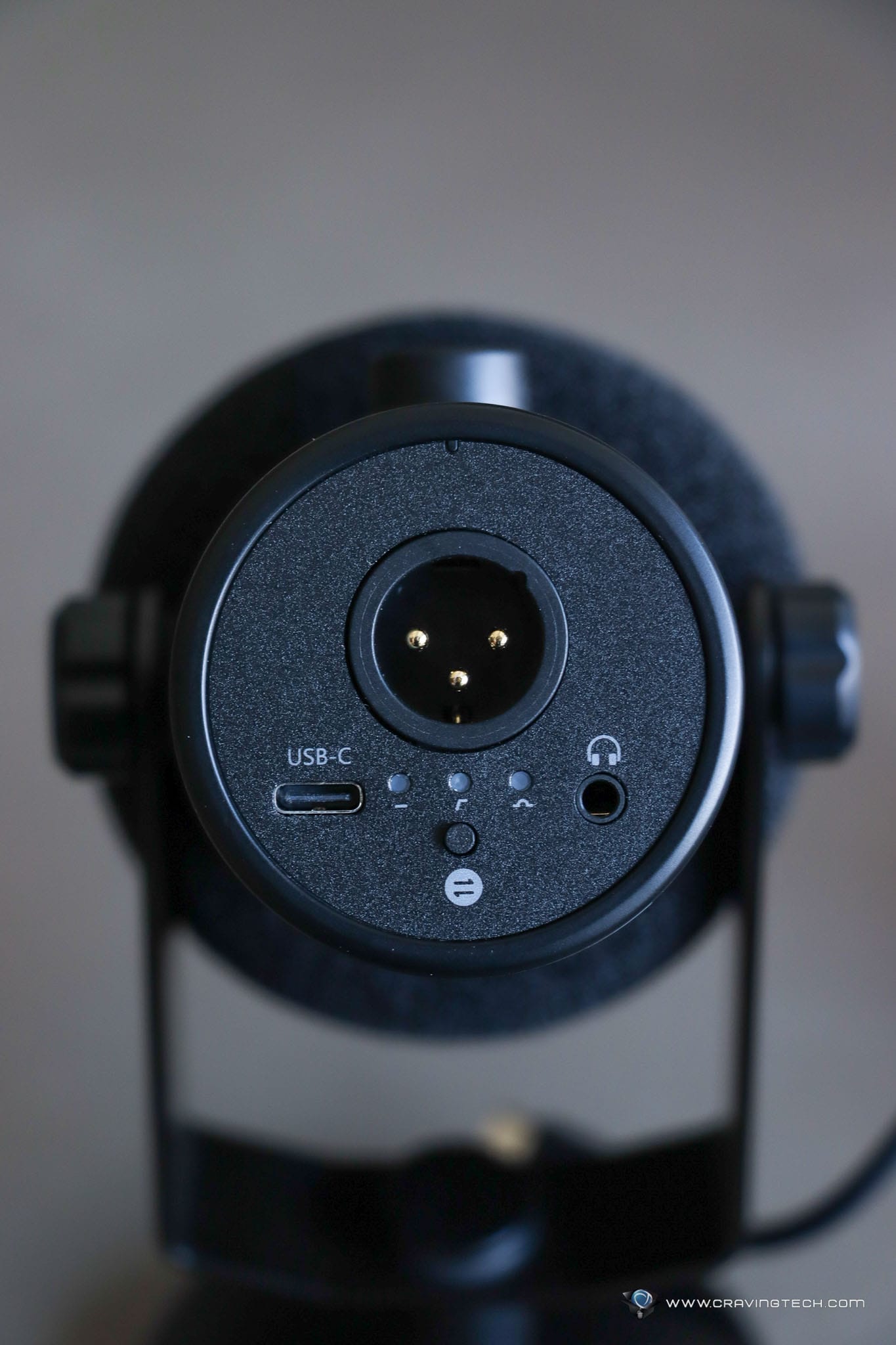
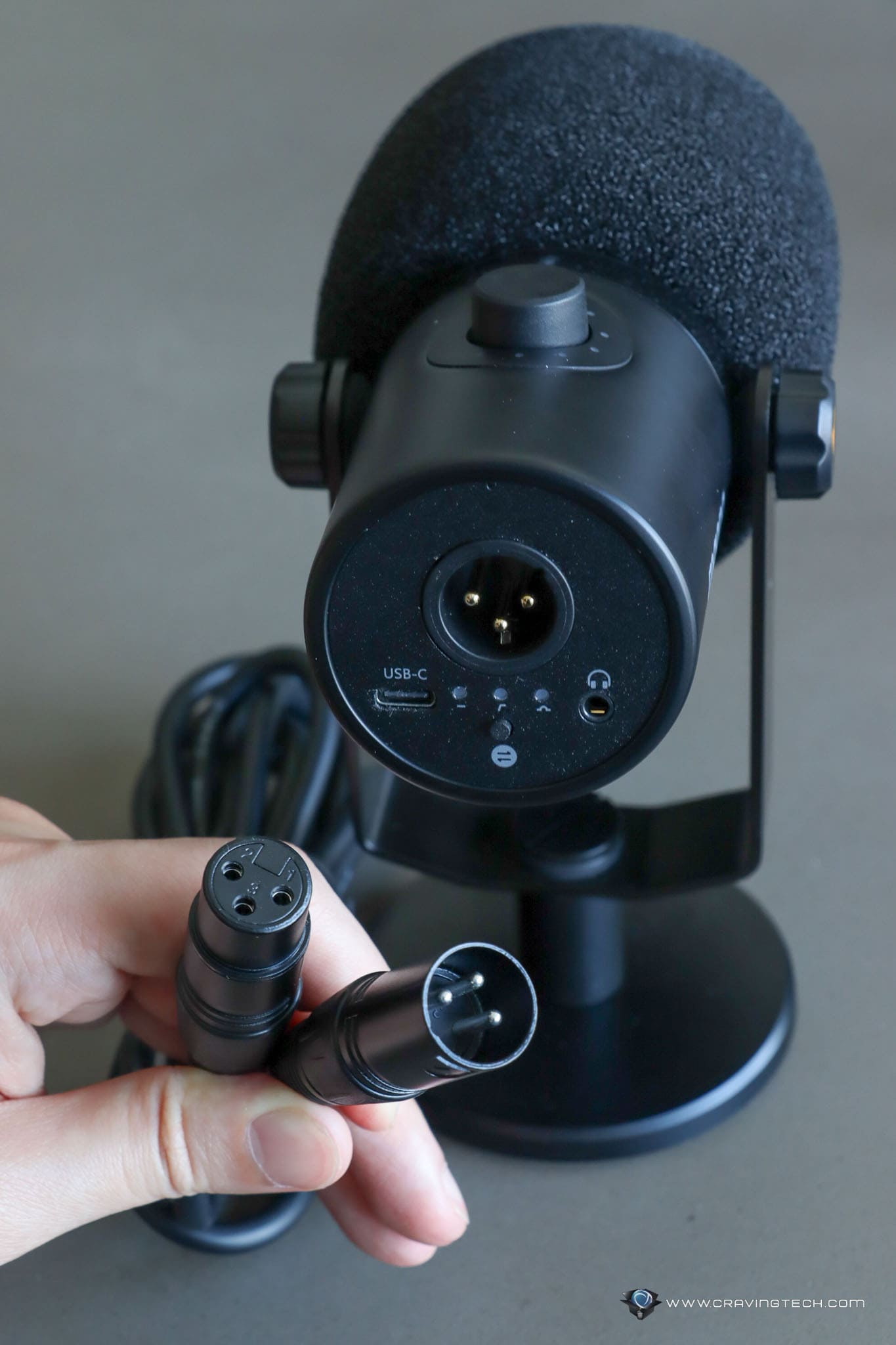
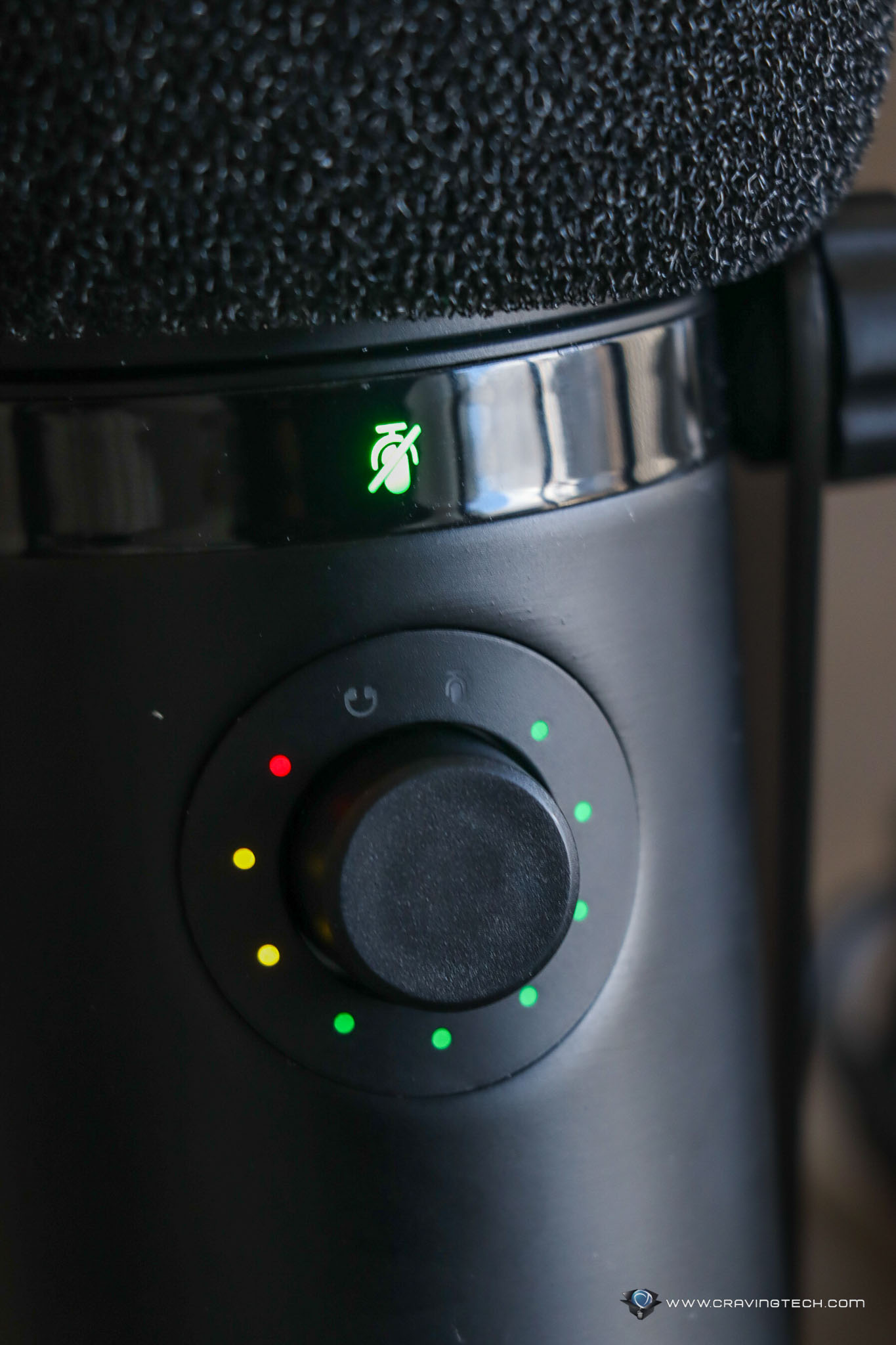
None of the materials look or feel cheap. The all-metal body and fully metal base contribute to a solid, hefty, and premium feel. I also love the sleek all black design, which again, adds on to the overall sense of quality.
Angling the microphone on its fastener is both smooth and yet has a subtle resistance for a controlled feeling during the adjustment.
When pressing down on the 3-in-1 Smart Knob, you’ll feel nice solid feedback. Even turning this knob is quite satisfying. It’s hard to explain, but the knob has an incremental adjustment where turning it feels rigid and distinct, but somehow smooth as well.
Features
- The 3-in-1 Smart Knob allows you to switch between microphone gain, headphone volume, and monitor mix. Turning the monitor mix louder will allow you to hear more of your voice and less computer audio
- Tap to mute – silent tap screen on the body allows muting/unmuting without a noisy button
- Dual audio outputs: XLR and USB-C.
- Headphone jack
- EQ adjustment button – at the bottom of the mic is a small button that allows switching between flat, high-pass filter, presence boost, and high-pass filter + presence boost modes.
- The Maono Link companion software enables detailed adjustments to the EQ, gain, limiter, and other settings.
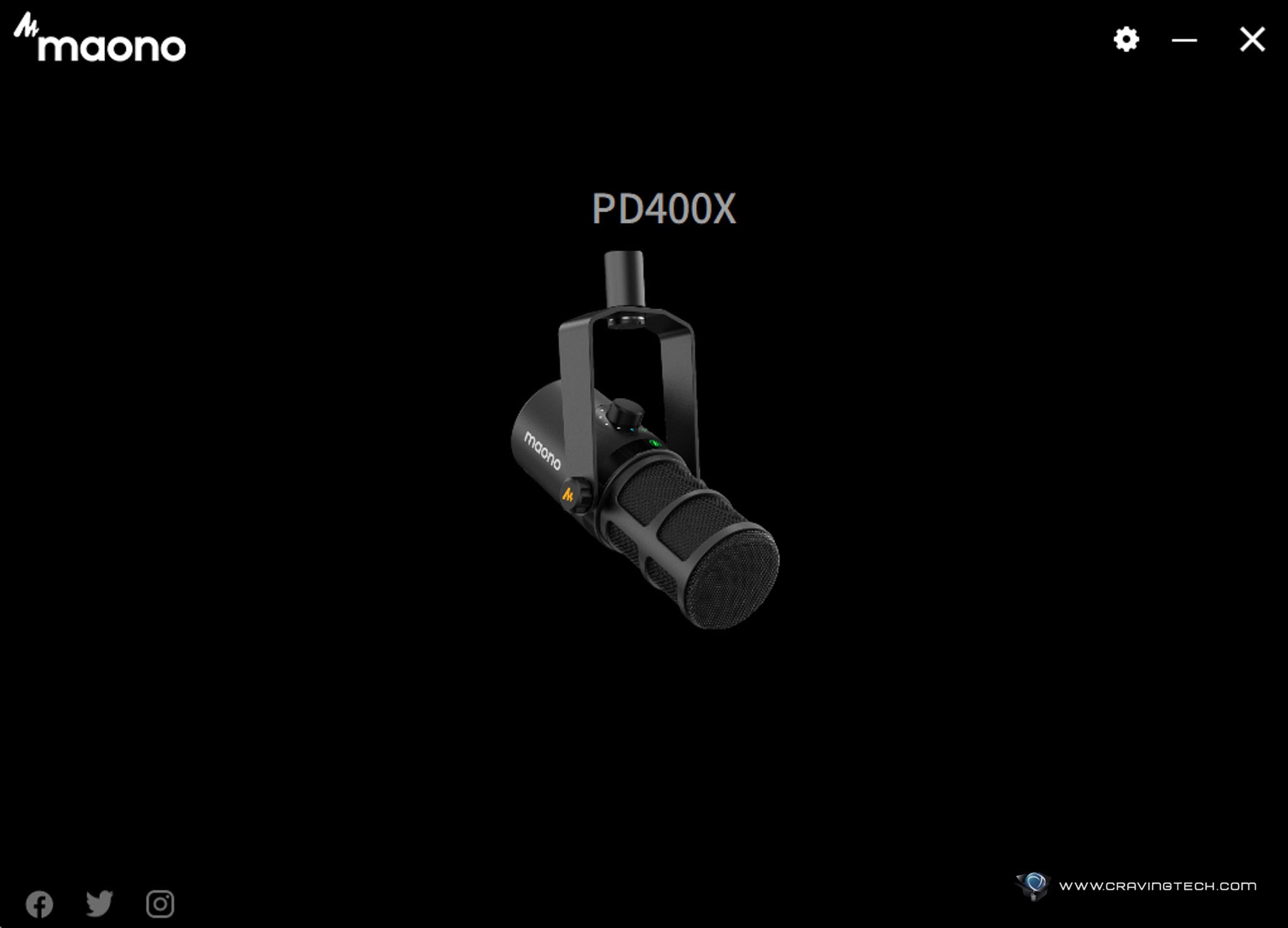
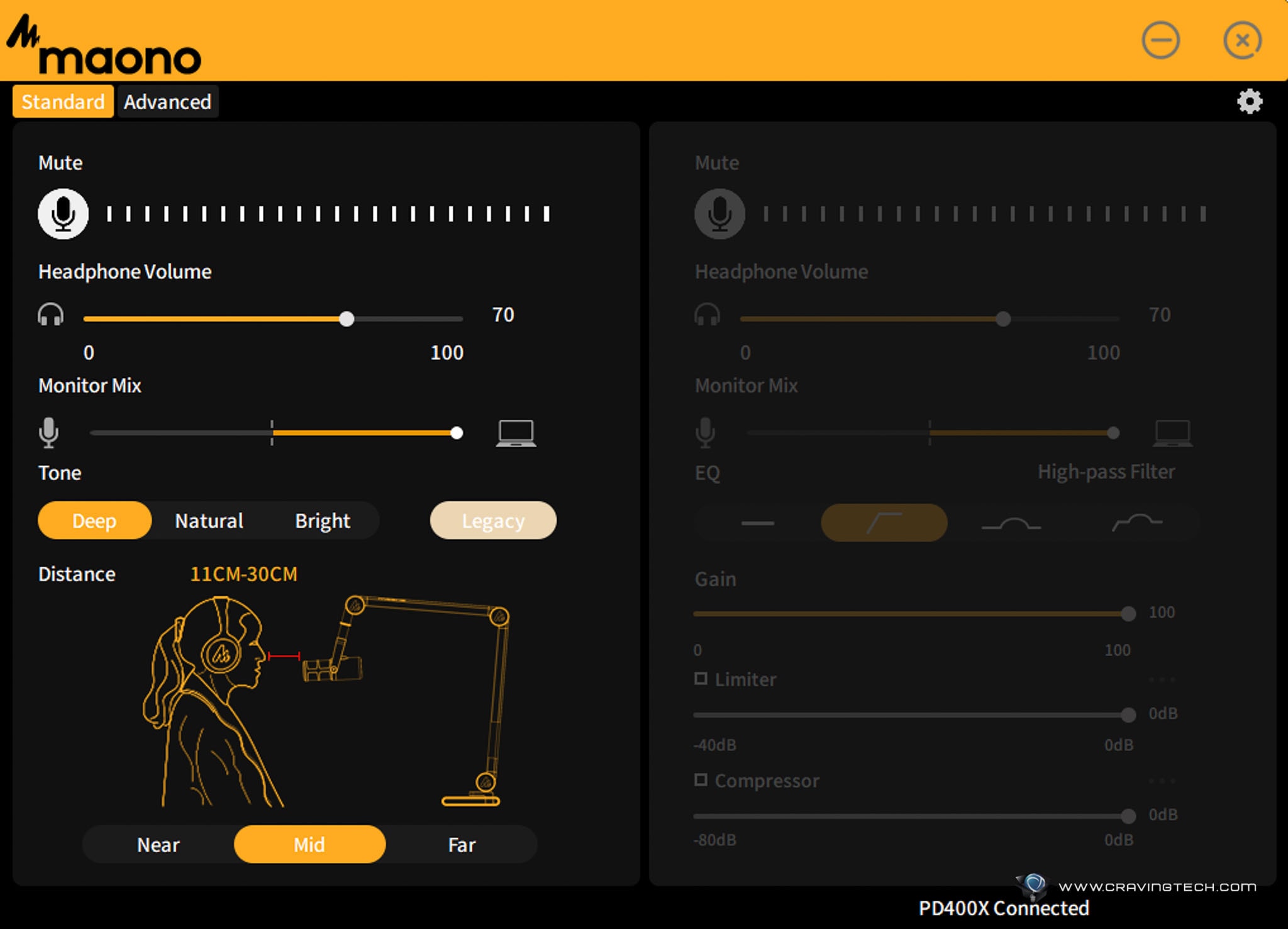
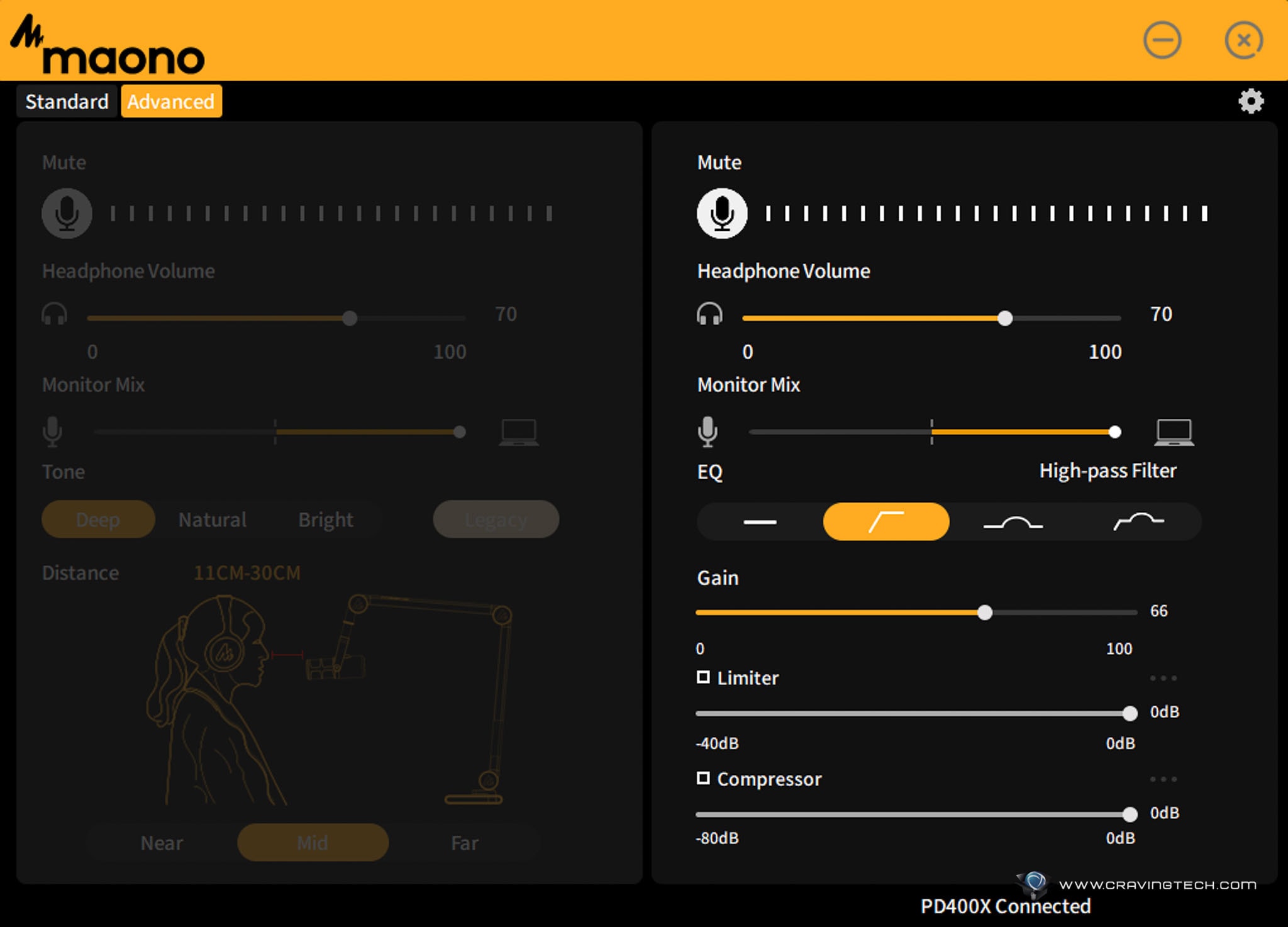
Sound Quality
I’ve only been testing the Maono PD400X with the USB connection, connecting it to my phone for audio recordings and my laptop for both audio recordings and online meetings. From these tests I would say that the sound quality is exceptionally clear and crisp, both for voice and instruments. It is also really forgiving in terms of angles of sound capture (so you can be off axis to the right or left and still capture sounds quite well.
However, I did find that the recording levels tend to be a bit soft, requiring me to increase the gain to ~30% for a satisfactory level of loudness. Still, overall, I’d say the sound quality is excellent.
Noise-Reduction
The noise reduction aspect honestly falls a bit short of expectations. When placed on a table with the stand, it tends to capture various sounds and vibrations, such as keyboard typing, slight movements in the base, and even the rocking of the table. Even when elevated off the table, it still picks up faint keyboard typing from behind. Additionally, noises (such as appliances being turned on) metres away, even with minimal gain, remains audible in the recording.
Using the wind foam can be effective, but it could further reduce recording levels. So, using software to eliminate background noises might be a better approach.
Portability
Dimensions: ~21.8 cm tall, ~8-9 cm on its widest part. Weighs approx. 1 kg. It’s nicely sized, and although hefty, the weight makes it feel solid and high quality.
Full Specifications
- Capsule type: Dynamic
- The capsule is the component that converts sound waves into electrical signals.
- Dynamic microphones are robust, durable, and versatile, but less sensitive (so they handle louder sounds well).
- They’re typically used for live performances and recording vocals such as podcasts.
- Directionality/Pattern: Cardioid
- The directionality of a microphone describes how sensitive the microphone is to sounds coming from different directions/angles.
- A cardioid pattern is most sensitive to sounds from the front, less sensitive to sounds from the sides, and rejects sounds from the back.
- Sensitivity:
- XLR: -51.2dBV/Pa.
This is the microphone’s sensitivity when connected via an XLR cable and indicates how effectively the microphone converts sound into an electrical signal.A lower negative value like -51.2dBV/Pa generally implies higher sensitivity. - USB: -8.5dBFS/Pa (Max).
This is the microphone’s sensitivity when connected via USB, and a lower negative value indicates higher sensitivity
- XLR: -51.2dBV/Pa.
- Sampling rate: 24-bit/48kHz
- The sampling rate is the number of data points taken per unit of time from an analogue audio signal to convert it into a digital one.
- Higher sampling rates can provide more detail and potentially capture higher frequencies.
- Frequency Response: 40Hz-16kHz
- The frequency response indicates the range of frequencies over which the microphone can accurately reproduce or transmit audio signals.
- The Maono PD400X should therefore be able to accurately reproduce frequencies from 40 Hz – 16,000 Hz, which covers a substantial portion of the audible spectrum (which is typically 20 Hz – 20,000 Hz).
- Mic gain range: 0 to +42dB
- The gain control allows you to adjust the amplification level applied to the microphone signal.
- At 0dB gain, the microphone signal is neither amplified nor attenuated (the signal is at its original level).
- At +42dB gain, the microphone signal is amplified by 42 decibels. This can be useful in situations where the microphone is placed at a distance from the sound or needs to capture quiet sounds.
- SPL: >130dB SPL
- SPL stands for Sound Pressure Level
- This means that the microphone is designed to handle sounds with a level > 130 decibels without significant distortion or damage to the microphone itself
Maono PD400X Microphone Review Conclusion
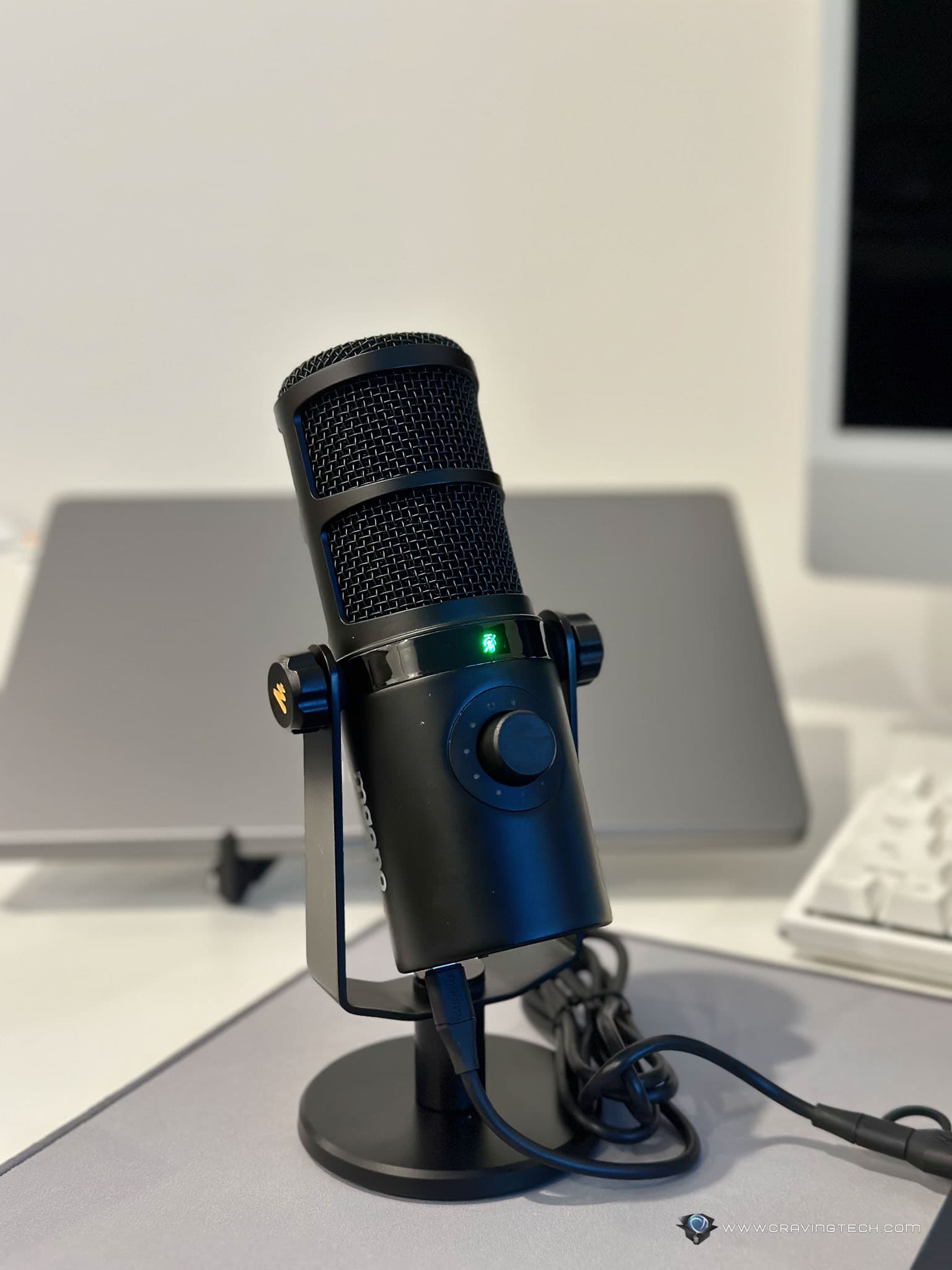
Overall, the Maono PD400X is an excellent starting microphone, with its versatility, range of exceptional features, and offering professional-grade sound quality without the professional-grade price-tag.
Disclosure: Maono PD400X USB/XLR Dynamic Microphone review sample was supplied for reviewing
Maono PD400X Review
Overall
Summary
The Maono PD400X is a value-for-money, beginner-friendly USB/XLR microphone offering solid build, versatile features, and professional-grade sound quality, ideal for podcasting, streaming, and general audio recording.
Pros
- Solid build, with hefty, and premium feel
- 3-in-1 Smart Knob for easy switching between microphone gain, headphone volume, and monitor mix.
- Tap-to-Mute feature for silent operation.
- Versatility and ease of set-up with dual audio outputs (XLR and USB-C)
- Sound Quality: clear and crisp sound reproduction for both voice and instruments. Forgiving in terms of sound capture angles.
Cons
- Relatively lacklustre noise Reduction
- Recording level tends to be on the soft side
- Microphone captures vibrations when placed on a table, so it’s advisable to place it on a boom arm






